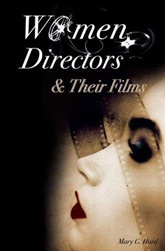By Mary G. Hurd
 The great tragedy of women directors in Hollywood is that having proved beyond any doubt their capabilities in the early silent era when, as Mary G. Hurd tells us, women directed “as often and as well as their male counterparts,” the corporatization of the movie business in the decade before sound saw women robbed of their bullhorns and exiled to editing suites and roles as script girls and costume designers. From about 1920 to the early ’70s there were only two women directors who managed to sustain careers in Hollywood: Dorothy Arzner and actress-director Ida Lupino; the latter, in her own words, “only had a career because I owned an independent production company.” Each of these careers gives a sense of what might have been had women been permitted to direct in that bare half century. Hurd mourns the hiatus, but the last 20 years have given her much food for thought, as women directors have barreled through the system and finally scaled the heights with Kathryn Bigelow’s DGA Award and Oscar for best director. Mixing biographical information with an overview of each career, Hurd identifies the commonalities and distinctions between the many female directors who’ve come to prominence. There are sections on documentarian Barbara Kopple, studio directors such as Nora Ephron, Martha Coolidge, and Amy Heckerling, and indie filmmakers who have produced interesting and provocative work, among them Allison Anders and Penelope Spheeris. Add to these directors such diverse international filmmakers as Jane Campion and Agnès Varda, and one is dazzled by the sheer diversity of their output and the stylistic variety. A necessary corrective to decades of myopia—and a pleasure to read.
The great tragedy of women directors in Hollywood is that having proved beyond any doubt their capabilities in the early silent era when, as Mary G. Hurd tells us, women directed “as often and as well as their male counterparts,” the corporatization of the movie business in the decade before sound saw women robbed of their bullhorns and exiled to editing suites and roles as script girls and costume designers. From about 1920 to the early ’70s there were only two women directors who managed to sustain careers in Hollywood: Dorothy Arzner and actress-director Ida Lupino; the latter, in her own words, “only had a career because I owned an independent production company.” Each of these careers gives a sense of what might have been had women been permitted to direct in that bare half century. Hurd mourns the hiatus, but the last 20 years have given her much food for thought, as women directors have barreled through the system and finally scaled the heights with Kathryn Bigelow’s DGA Award and Oscar for best director. Mixing biographical information with an overview of each career, Hurd identifies the commonalities and distinctions between the many female directors who’ve come to prominence. There are sections on documentarian Barbara Kopple, studio directors such as Nora Ephron, Martha Coolidge, and Amy Heckerling, and indie filmmakers who have produced interesting and provocative work, among them Allison Anders and Penelope Spheeris. Add to these directors such diverse international filmmakers as Jane Campion and Agnès Varda, and one is dazzled by the sheer diversity of their output and the stylistic variety. A necessary corrective to decades of myopia—and a pleasure to read.
Review by John Patterson